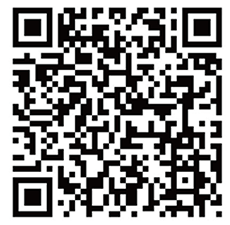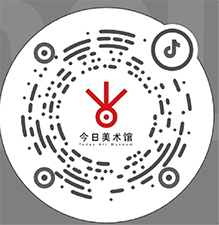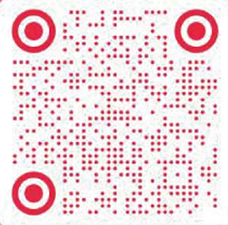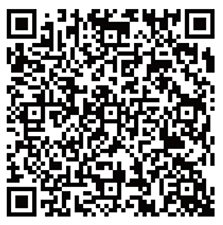As
Exhibition scale – The Largest Solo Exhibition in Today Art Museum’s History
“Whether in terms of the art museum’s input or the academic research engaged, this exhibition is the most important academic solo exhibition in
Academic goals – Providing a Chinese-language Critical Case Study for the Global Contemporary Art Interpretation System
Wang Guangyi has been one of the most important representatives of Chinese modernist art since the 1980s. His artistic career embodies the complex paradoxical logic involved in Chinese contemporary art’s progression from its enlightenment era to modern avant-gardism, post-modernism and consumerism, but the complexity of his artworks and the constant shifts in his style amount to a series of “traps” in the criticism and research of his art, and this has led to constant misreading. The label and definition of “political pop” is like a double-edged sword. On the one hand, Wang has won broad acclaim in the Chinese contemporary art world, but on the other, this label has led to the constant misreading of his artistic creations in various periods, and even long-term distortion and limitation by Cold War critical discourse authority and commercial capital interpretations. Perhaps the words of Austrian poet Ranier Maria Rilke can best describe the interpretations of Wang Guangyi: “Fame is finally only the sum total of all the misunderstandings that can gather around a new name.”
Such misreading has followed him from the very beginnings of his artistic career. In 1984, Wang Guangyi and his peers organized the earliest modern art group, the “Northern Artists Group,” with their stated goal being the “creation” of an entirely new, revelatory, mythological “world.” The hypothesized enemies of this academic goal were the various “rococo-tipped arts” and “pure formalist pathological arts.” The difference here with the “enlightenment of the masses” advocated by the “85 New Wave Art Movement” was plain to see, but interestingly, the Northern Artist’s Group and the “rational painting” it advocated were always viewed as the mainstream of this very movement.
In the end, such misreading led Wang Guangyi to maintain a long period of silence and to avoid holding frequent solo exhibitions. Thus, there is much significance in an endeavor to view Wang Guangyi as an “art history topic” rather than an artistic individual, and to engage in in-depth research of this topic in connection to the history of Chinese ideas and visual culture. In 2008, Huang Zhuan curated Wang Guangyi’s first domestic solo exhibition, entitled “Visual Politics – Another Wang Guangyi,” which mainly presented the installation artworks that had made him famous in an effort to use this cross-sectional view to clear the artist of the many political markers that had been affixed to him, and to probe the real logical relationships between the political views and art of this so called “political artist.”
Politics, Art and Theology: the Wang Guangyi Art Research Project will engage in academic research of Wang Guangyi’s art through the theme of “thing-in-Itself,” striving to present the historical dialectic nature of his artworks between rationality and belief, the vulgar and transcendental worlds, between politics and theology, while using the presentation of this typical case in Chinese contemporary art history to clear up the internal logic, image methods and situational influences of this period in history through integrated methods of art history and the history of ideas. The academic goal of this effort is to provide a Chinese-language critical case to the theoretical interpretation system of global contemporary art.
Thing-in-Itself is a thread that permeates all of Wang Guangyi’s Works
The theme of this exhibition, “thing-in-itself,” is a central category in Kant’s philosophy and a core topic in the modern history of human thought. The thing-in-itself is the source and foundation of phenomenal and sensory matter, but it is also something unknowable, outside the boundaries of cognition. As Kant sees it, a world beyond the subjective world determines our cognition, but it is on the boundaries of human cognition. The world that we can see and touch is merely a surface appearance, and the characteristics of this world behind it happen to form the best methods for the artistic depiction of the world. How to handle the challenge of conquering both the world of visual appearance and the world of revelatory thought has become the first question that all artistic questions must solve. This concept of the “thing-in-itself,” both philosophical and theological in nature, is a main thread in the entirety of Western philosophy, with various periods and schools interpreting it in different ways. It was still the center of much controversy in 19th and 20th century Western philosophy, but in the Chinese art world, it is still a much discussed and explored topic.
Huang Zhuan, who has known Wang Guangyi for nearly thirty years, has through many years of tracing and researching his art, discovered that the “contradiction between the transcendental and secular worlds” is a trait that is found in all of Wang Guangyi’s art. Wang Guangyi himself believes that there is a mysterious transcendental world that lies behind the secular world, a “thing-in-itself,” and he has a lasting obsession and respect for it. Wang says, “When I was in college, my interests were in religious philosophy and the philosophy of existence. I loved reading Thomas Aquinas, Nietzsche, Sartre and Kant, but later I grew more enamored of medieval theology. I love classical, mysterious things. The perplexity caused by the ‘thing-in-itself’ has always permeated my creative process.” Other scholars, notably Italian critic Paparoni Demetrio, affirm the supporting role of the “thing-in-itself” in Wang Guangyi’s artworks.
This exhibition’s exploration of this individual case can raise the understanding of Chinese contemporary art to a new level. Before this, Chinese contemporary art was often viewed as a “vulgar art,” mainly connected to society, politics and the economy, while people ignored the most important perspective, which is to recognize art as itself.
Exhibition Content – Nearly Forty Artworks Spanning Wang Guangyi’s Three Decade Career
The exhibition comprises four segments, entitled Imagining Cultural Utopia: the Logic of Creation”, “From Analysis to Pop: Correction and Requisition”, “Materialist Theology: Material and Form”, and “Thing-in-Itself.” The first three segments present roughly forty of the most representative artworks from Wang Guangyi’s oeuvre from the 1980s to the present, including such oil paintings as Frozen North Pole (1985), Post-Classical: Death of Marat (1986), Black Rationality – Purgatory Analysis (1987), Great Criticism – Marlboro (1992) and large scale installation works such as VISA (1994), Fundamental Education (1996) and Cold War Aesthetic (2008). These segments will also present many previously unreleased plans, sketches, videos and images. The videos include the documentary film The Art of Wang Guangyi by Wang Junyi, and another documentary Chimeras on the artist by Mika Mattila who is the independent documentary producer from Finland. The fourth segment will present the large scale installation works Sacred Object and Things-in-Themselves, which the artist has created specifically for this exhibition.
Since 2008, Wang Guangyi has basically maintained a state of silence, not only refraining from any solo exhibitions but seeming to be wholly uninterested in the apparently bustling “scene.” Wang says, “It was perhaps at that time that I began to look back over my 30 year artistic trajectory, and my thoughts and creations had no real connection to the outside world. Whether or not I fell ‘silent’ is simply a matter of others’ opinions.” Wang also believes that while others see his work changing in style over time, for him, there were no so called moments of change. When pressed, the only such moment he can call to mind is when a certain mysterious force “suddenly ignited.” Though there is a certain amount of serendipity in the creative materials he used, and his artworks have taken on different appearances, they all share a similar background.
As for the inescapable shadow of “compelling circumstances” in Wang’s early work, the artist has said that he was “quite sensitive to the circumstances” in his youth, and that certain external contradictions and conflicts would spark in him a desire to compete. But with the passage of time and the artist’s growth, his creations have turned inwards to become the self interpreting the self. He used the classic Chinese story of “shooting the arrow without shooting” to express his mental creative state at this time: “In the Warring States period, there was a youth in the capital of the
Looking back over world art history, “renouncing the outer world and returning to a state of emptiness” is the path that every great artist must take.
Large Installations – Presenting the Materiality of Things with No Flourishes
The fourth segment in this exhibition consists of a large-scale installation work entitled Thing-in-Itself which Wang Guangyi has devised according to the dimensions of the Today Art Museum’s exhibition halls 1 and 2. In this 12.5 meter high space, Wang has stacked nearly 5000 traditional burlap sacks of rice, and installed seven large lights on the ceiling. When walking within this installation, one gets the sense of entering a solemn and tranquil church, while also feeling like they accidentally walked into a grain warehouse. Curator Huang Zhuan believes that Wang’s selection of burlap and rice, these simplest and most common materials in everyday life, is inseparable from his longstanding attitude towards art. In an unpublished essay entitled The Potato is a Sacred Object, consisting of a dialogue between Wang Guangyi and Yan Shanchun, Wang Guangyi notes that his favorite Van Gogh painting is not one of the famous colorful ones such as Sunflowers or Irises but his early oil painting Potato Eaters. It is said that such paintings from his early years reflected real life. In this painting, a poor family, after a long day of arduous labor, has only potatoes to eat. The “potato,” that simplest of human staples, gives powerful expression to man’s life and inner state.
Likewise, in Wang Guangyi’s art, he prefers to present the materials themselves without any unnecessary flourishes. He believes that if the audience’s perception is in accord with his own, then this experience is the artwork’s “thing-in-itself.”
Wang Guangyi tells us that the creative inspiration for this installation work is tied to his perceptions of the site: “Whenever I would visit the
Related Events – Documents and Artworks will be Treated with the Same Importance
This “clash” between the
Compared to many past and present art exhibitions in
The
Document Compilation: using the structure of the exhibition as a foundation, the museum has compiled a large bilingual (Chinese and English) research monograph to accompany the exhibition, with essays by Chinese and foreign scholars including Huang Zhuan, Wu Hung, Jonathan Fineberg, Gary G. Xu, Lu Peng, Yan Shanchun, Carol Yinghua Lu, Lu Mingjun, Wang Min’an and Paparoni Demetrio.
Today Art Forum: The Martell Today Art Forum entitled Wang Guangyi Talks About Art, will be held at the Central Academy of Fine Arts on October 26, 2012. It will be hosted by curator Huang Zhuan, with Wang Guangyi providing the main talk.
“Contemporary Art History Composition Methods” international symposium: hosted by renowned art historian and University of Chicago professor Wu Hung, and held at the Today Art Museum at 10:00am on October 14, 2012. Participants will include curator Huang Zhuan, famous Italian curator and critic Paparoni Demetrio, famous art historian, curator and Duchamp researcher Arturo Schwarz, University of Illinois professor Gary G. Xu, famous American art historian Jonathan Fineberg and famous Chinese critics and curators Yan Shanchun, Lu Mingjun, Carol Yinghua Lu, Lu Peng, Yin Jinan, Liu Xiaochun and Karen Smith, Gwangju Biennale director Yongwoo Lee and translator Jeff Crosby. Many artists, curators and media professionals will also take part.
International Academic Exchanges: on October 14, aside from the writers and guests of the symposium, the museum has also invited foreign scholars and experts to visit
Exhibition Reception: after the exhibition opening, the
Sponsorship – Two Strategic Partners Provide Strong Support
Since its inception as a non-profit art museum in 2006,
As a long term partner of the
Meanwhile, another strategic partner, Martell, has also provided the
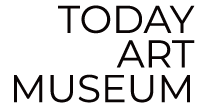
 Zhiguan: Wang Zimu Art Exhibition
Zhiguan: Wang Zimu Art Exhibition Seasons of Cezanne The Immersive Experience
Seasons of Cezanne The Immersive Experience Marie de Villein: Behind the Sun
Marie de Villein: Behind the Sun “一粒一世界——北京大学颗粒艺术展”
“一粒一世界——北京大学颗粒艺术展”
 Florentijn Hofman :Celebrate!
Florentijn Hofman :Celebrate! Li Nu: As if Sand Were Stone
Li Nu: As if Sand Were Stone Exhibition customization course | TIM YIP MIRROR children's art class
Exhibition customization course | TIM YIP MIRROR children's art class
 TAM Open Studio / Hello, New Friends
TAM Open Studio / Hello, New Friends WANG SHIKUO/TODAY ART MUSEUM YOUNG ARTIST RESIDENCY IN NEW YORK CITY
WANG SHIKUO/TODAY ART MUSEUM YOUNG ARTIST RESIDENCY IN NEW YORK CITY 2018 third wang shikuo award -- nomination exhibition of contemporary young artists
2018 third wang shikuo award -- nomination exhibition of contemporary young artists


